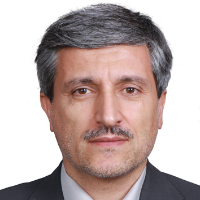An Introduction to the Entrepreneurial Approach in Contemporary Architecture in Iran(With a Focus on the Problems and Challenges of Architecture as Opportunities for Architectural Entrepreneurship)
Problem statement: Utilizing knowledge as an inexhaustible source of wealth creation has drawn the attention of scholars to the concept of entrepreneurship in various disciplines to achieve the economic and social development of societies, adapt to changes, and commercialize knowledge. In this regard, architecture must also take steps to ensure its survival and presence, and to synchronize with this concept in a dynamic and up-to-date structure to solve problems, overcome challenges, and respond to the demands and needs of society. It must align its traditional mindset with an entrepreneurial mindset and utilize its skill potential. The main question of this study is: What is the concept of opportunity-based architectural entrepreneurship? What is its structure, mechanisms, results, and contributions? And what are the components of the entrepreneurial model of Iran’s architecture presently based on entrepreneurial opportunities?Research
This study, while addressing the necessity of attention to the emerging concept of architectural entrepreneurship, presents a conceptual model of opportunity-based architectural entrepreneurship and examines the formation process and details of the realization of this model in the context of today’s architecture in Iran.Research
The present study is applied-developmental using a mixed approach, combining qualitative and quantitative methods. Data collection was exploratory and carried out in two steps; first, in the field of architecture, the meta-synthesis method was used to find the dimensions of problems, deficiencies, and challenges of today’s architecture in Iran, and in the second step, the Fuzzy Delphi technique was used to validate the extracted dimensions and components. The statistical population of the first step included 59 scientific research documents, and the second step included 39 architectural experts selected based on purposive sampling. Through the meta-synthesis method, 11 macro-level problems, deficiencies, and challenges of today’s architecture in Iran were identified as entrepreneurial opportunities in the Iranian architecture field. All macro-level problem dimensions and their associated components were validated and verified by experts using the fuzzy Delphi method owing to the necessity of attention to the emerging concept of architectural entrepreneurship, and the initial model of the opportunity-based architectural entrepreneurship process was outlined.
According to the obtained model, to realize start-ups in the field of architecture, the architectural entrepreneurship opportunities, a large portion of which stem from the problems, challenges, and weaknesses of contemporary Iranian architecture, must be examined so that the architectural entrepreneurship process can take shape through the interaction of architecture with entrepreneurial knowledge and its associated skills. In this way, one can leverage all the benefits and advantages of entrepreneurship in architecture and use them to address architectural problems and challenges, create employment and welfare, achieve sustainable development in various dimensions, and create and preserve the values of the Iranian architectural community.
-
DURABILITY AND DYNAMISM OF CULTURAL IDENTITY IN RECENT RESIDENTIAL COMPLEXES (CASE STUDY: KERMANSHAH RESIDENTIAL COMPLEXES FROM 1980)
Moein Aghaeimehr, Gharehbaglou Minoo *, Mohammadtaghi Pirbabaei
HOnar - ha - ye - ziba Memari - va - shahrsazi, -
Sound quality of historical mosques in Tabriz in accordance with international standards
Farzaneh Gholizadeh *, Abbas Ghaffari,
Journal of Theoretical and Applied Vibration and Acoustics, Summer & Autumn 2024 -
Recognizing the way of multi-sensory perception of pilgrimage in the process of cognition (case example: Imam Reza's Holy Shrine)
Elmira Karimipour *, Minou Gharehbaglou, Mohammadali Kaynejad, Hamed Beyti
Journal of Greate Khorasan, -
Types of Change in Forming the Architectural Built Space (Case study: Faculty of Architecture and Urban Planning, Tabriz Islamic Art University)
Ahmad Mirahmadi *, Minou Gharehbaglou, Mohammadtaghi Pirbabaei
Architectural Thought,



